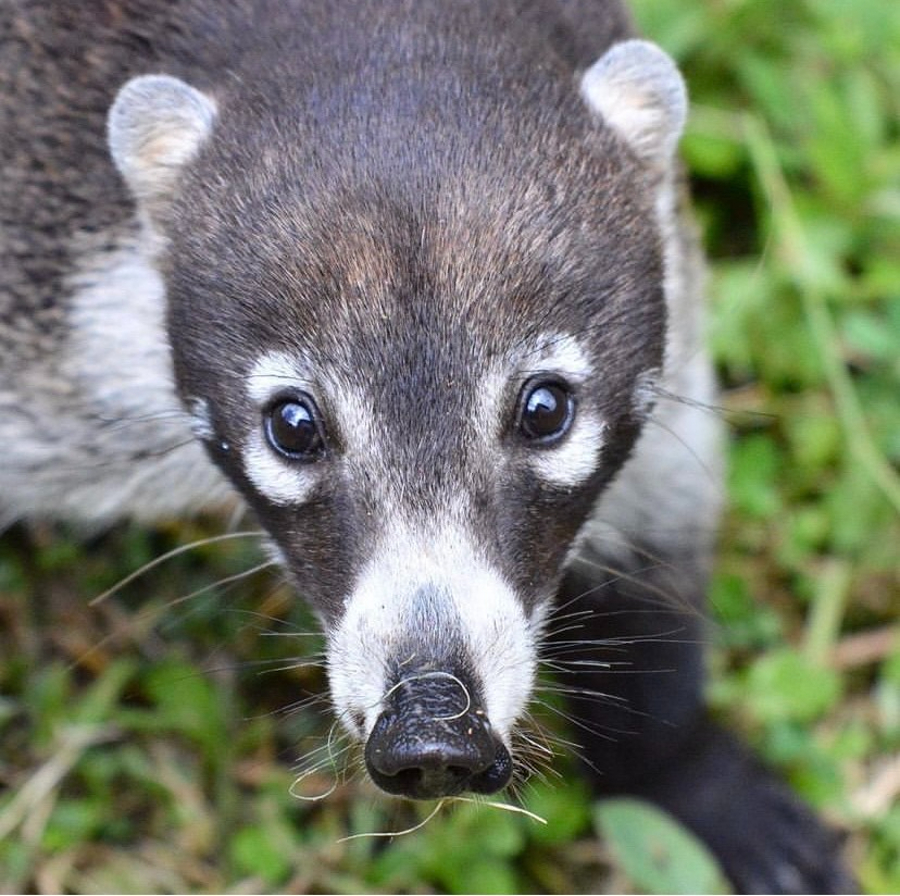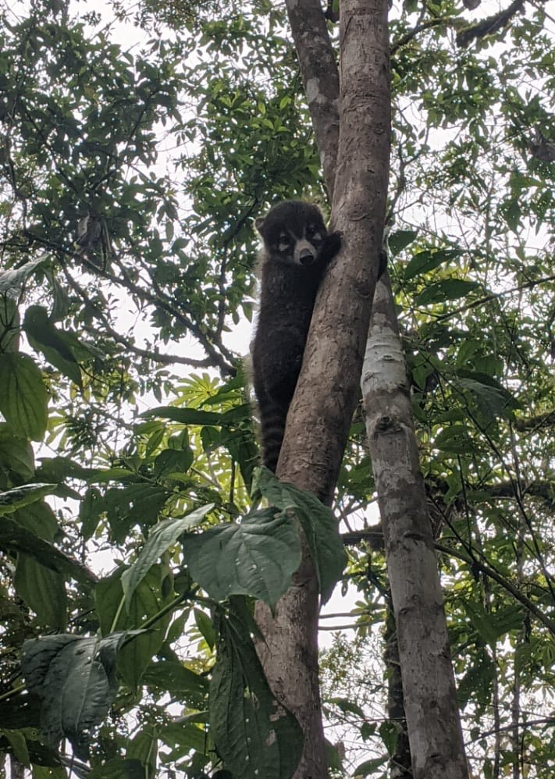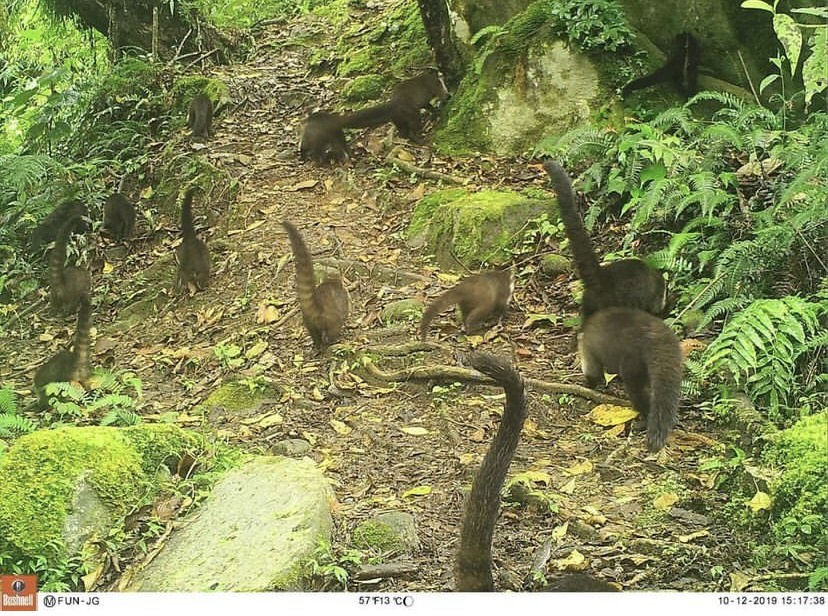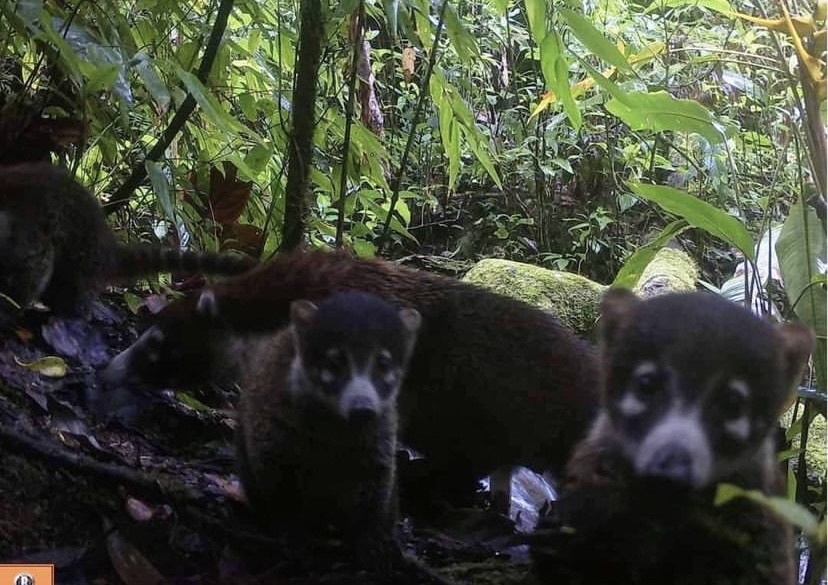
Cousin to the familiar raccoon, White Nosed Coatis (Nasua Narica) are a common type of mammal that’s found throughout all of Costa Rica, and it’s a fan favorite here at Cloudbridge Nature Reserve. Most often, these (fat) house-cat sized animals are seen either foraging around the forest, or climbing trees in search of delicious fruits and insects (sometimes, they may try and invade our compost and cheat their way to a meal). Many times, such a charismatic animal may be overlooked, as it’s initial behavior doesn’t seem to be anything too special. How can an animal that looks so similar to a raccoon really be that unique? However, the more we learn about coatis, the more we’ve discovered how complex their lifestyles are.

Even though the White-Nosed Coati is probably the most commonly seen mammal throughout our cloud forest, that doesn’t mean that all of it’s behavioral tendencies are known. Like most animals that live in a jungle, especially the understudied cloud forest, there’s always more to learn and discover about these animals and how they’ve evolved over time to achieve peak biological fitness. Oftentimes, we’ll see the coatis making their way through the forest in large groups, sometimes up to 15 individuals at one given time. But other times, we may see a lone coati sauntering through the forest by itself. It’s been commonly asked why this occurs, so it was time to try and find some answers.
Researcher Adam Gaston from the United Kingdom spent three months at Cloudbridge, and focused his time on researching behavioral patterns of the coatis. More specifically, he wanted to determine if there were specific social and asocial tendencies that took place in regards to differing elevations. For some context, we have about 1000 meters of elevation change here at Cloudbridge, beginning as low as 1400 meters and reaching as high as 2400 meters. This big elevation change allows a for a few different environmental differences. For one, this allows for quite a significant change in habitat, as the normal trend is the higher the elevation, the older the forest. Some of the forest at the lower elevations is less than 20 years old, whereas the forest in the higher altitude sections of Cloudbridge can be as old as 150 years or more. Additionally, because some of the forest is older than other parts, this changes the density of both the canopy and lower growing shrubs, causing a difference in what species of plants grow in that area. Adam was searching to see if any of these elevation changes allowed for the coatis to experience different behavior, considering it causes environmental differences. He mainly focused on social and asocial behaviors, which eludes to whether or not the coatis spent more time in groups or were found in the forest alone.

In order to study the coati behavior, Adam used camera traps that were dispersed throughout different elevations of the reserve. Camera traps are an effective methodology of studying mammals, as it allows the viewer to see the natural behavior of the specimen without any human interference. Over a three month time period, Adam was able to capture 314 instances of coatis on the trail cameras who demonstrated a myriad of differing behaviors. From his study and data analysis, the data suggested that higher asocial behaviors were found at higher elevations, while more social behaviors were seen at lower elevations. To find out why this was the case, you can read his full paper here.

Suggested Reading:
- Want to understand better how these animals are related to raccoons? Specific to Costa Rica, there are three different animals that share many similar characteristics with coatis, even though they’re different species. With many physical differences and behavioral differences, it’s interesting to see how they’ve each evolved to accomplish their needs best.
- Sometimes it can be a surprise to hear that animals exhibit either social or asocial behavior, sort of how humans do. Learning about the meaning behind each behavior type helps us to understand these animals better as well as assess their needs better from an conservation standpoint.
- It was recently discovered that animals who live in large groups tend to have a longer lifespan. There’s a myriad of reasons backing up this research, although more than anything it really just has to do with the evolutionary ecology of that particular animal. It’s a complex topic that is definitely worth looking further into.
